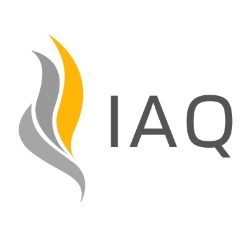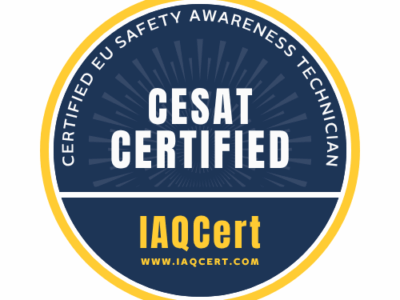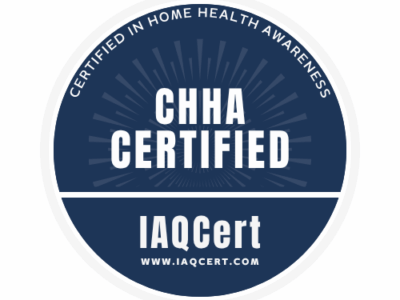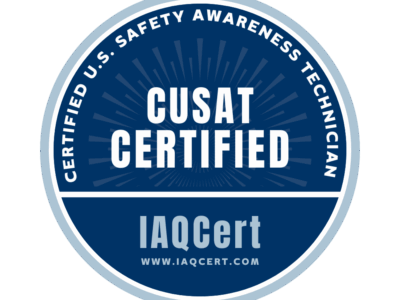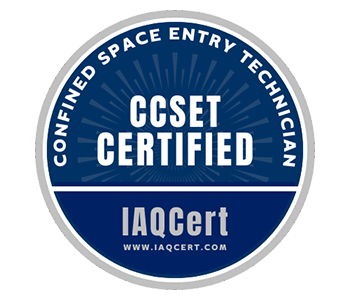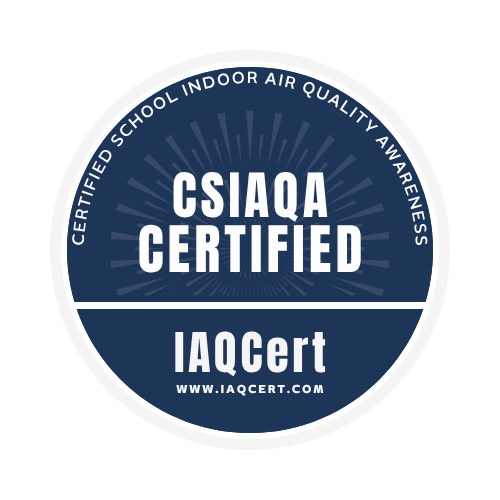Certified School Indoor Air Quality Awareness (CSIAQA)
An IAQCert Awareness Series Course
This course trains you to recognize environmental red flags that may signal indoor air quality issues, health risks, or maintenance concerns within school buildings—before they impact student well-being or learning outcomes. Whether you’re a teacher, school staff member, parent, or advocate, this course helps you detect warning signs like poor ventilation, moisture damage, pest activity, or chemical hazards using your senses and practical awareness.
While especially valuable for school-based professionals seeking to create safer learning environments, the course is equally relevant for parents, PTA members, and community advocates who want to make a difference by identifying concerns, documenting them clearly, and supporting action toward healthier schools.
Overview
Certification
As a Certified School Indoor Air Quality Awareness (CSIAQA) graduate, you’ll learn to identify visual and sensory red flags — such as musty odors, stained ceiling tiles, condensation on windows, or improper chemical use — that may signal hidden hazards.
This Assessment-Based Certificate (ABC) program verifies your ability to recognize, document, and communicate IAQ concerns effectively while promoting safer, healthier learning environments. After passing the course, you’ll receive a digital IAQCert ID card that can be saved to your Apple or Google Wallet, providing real-time proof of your credential and reinforcing your commitment to healthier schools..
Learning Pathways
1. LearnEase
Explore 7 student-friendly modules covering foundational IAQ concepts—like ventilation, pollutants, moisture, cleaning practices, and pest management—along with practical reporting and advocacy tips. Each lesson is short, actionable, and rooted in real-life school scenarios.
Start Learning Now
2. CertFast
Already have experience in school environments? Skip straight to the final exam to prove your awareness and earn certification in less than 30 minutes.
Get Certified Fast
Learning Outcomes
- Understand how indoor air quality affects student health, learning, and attendance.
- Identify clues of poor airflow, stale air, and HVAC dysfunction in classrooms.
- Spot early signs of mold, moisture damage, and pest infestations.
- Recognize harmful cleaning products and chemical exposures in school environments.
- Learn how to document IAQ concerns clearly and engage school leadership responsibly.
- Advocate for practical improvements, from policy changes to maintenance solutions.
- Assess classrooms, staff rooms, and even outdoor surroundings with a trained eye.
Enrollment & Certification Policy
Your enrollment includes access to all course materials and the certification exam for one year from your enrollment date. Once certified, your CSIAQA credential remains valid for the same 1-year period and can be renewed annually to maintain your verified status.
Curriculum
Curriculum
- 9 Sections
- 10 Lessons
- 52 Weeks of Access
- Module 1: Understanding Indoor Air Quality in SchoolsLearn how indoor air quality affects student health, development, and academic performance. Discover the pollutants most common in schools, why children are especially vulnerable, and how poor air can silently harm learning before symptoms even appear.1
- Module 2: The Role of Ventilation in SchoolsLearn how to detect and correct poor classroom ventilation. Understand how HVAC systems, CO₂ levels, and airflow patterns affect student health, and discover simple, effective ways to improve air quality using filters, fans, and smarter behaviors.1
- Module 3: Moisture, Mold, and Dampness in School BuildingsLearn to identify visual and sensory signs of moisture damage and hidden mold — including stains, odors, peeling surfaces, and hidden condensation sources. Discover how to prevent mold growth, address leaks quickly, and protect student health through moisture control.1
- Module 4: Common Indoor Pollutants and SourcesDiscover how everyday cleaning products and habits affect school air. Learn to spot high-risk chemicals, choose low-VOC alternatives, and improve air quality through smart custodial practices, safer storage, and green-certified tools.1
- Module 5: Integrated Pest Management and IAQLearn how pests like rodents and cockroaches affect school air through airborne allergens and biological pollutants. Discover the health risks of pesticides and how to implement safer, chemical-conscious solutions with Integrated Pest Management (IPM) strategies.1
- Module 6: Recognizing and Reporting IAQ ConcernsLearn how to spot hidden IAQ problems using your eyes and nose. Document concerns like odors, moisture damage, or blocked vents clearly and professionally—and report them through the right channels to support healthier classrooms.1
- Module 7: Advocating for Healthier School EnvironmentsTurn awareness into action by learning how to organize, document, and advocate for better air in schools. Explore how to engage staff, boards, and public agencies to drive long-term change and create healthier learning environments for all.1
- Bonus ModuleThis bonus module trio takes your IAQ awareness further. Learn how classroom materials, seasonal weather, and school renovations introduce hidden indoor air hazards. From VOC-emitting furniture and mold-prone summer shutdowns to construction dust and ventilation disruptions, you’ll gain the skills to anticipate and act on risks before they impact student health.3
- CSIAQA Certification Exam3

